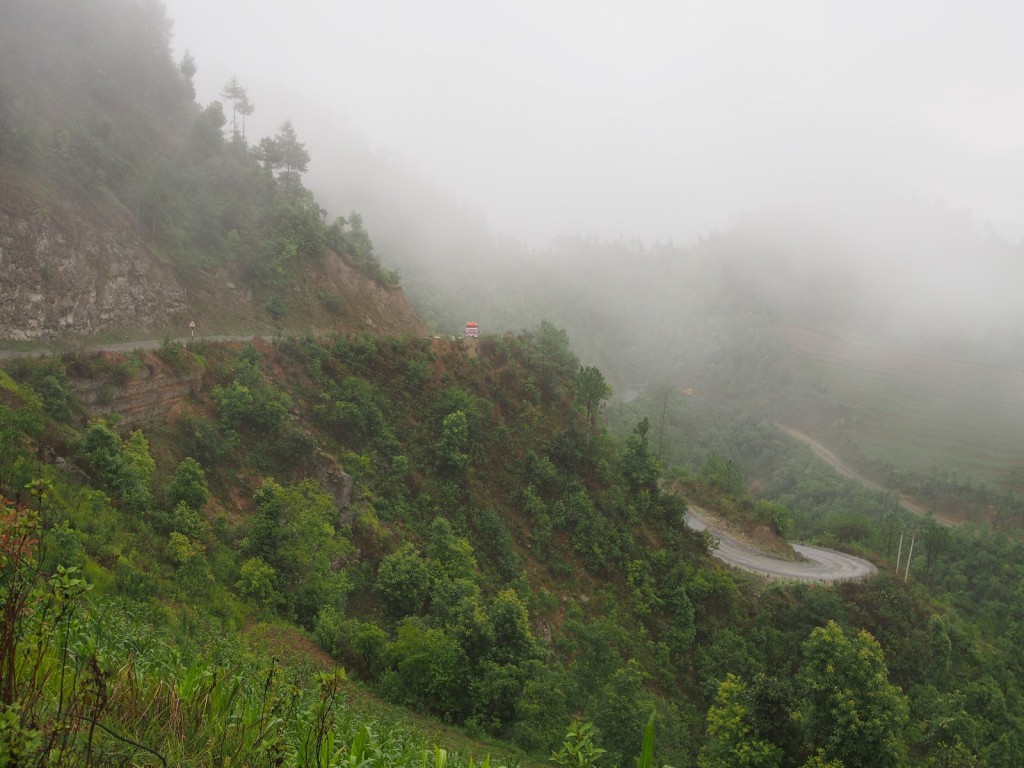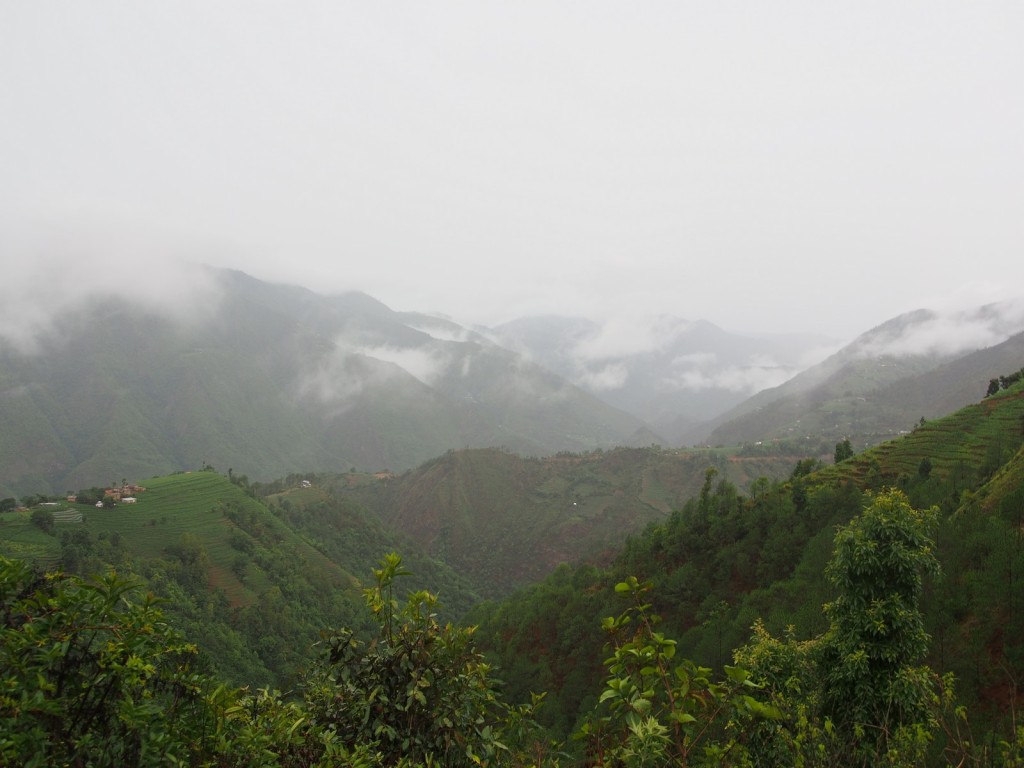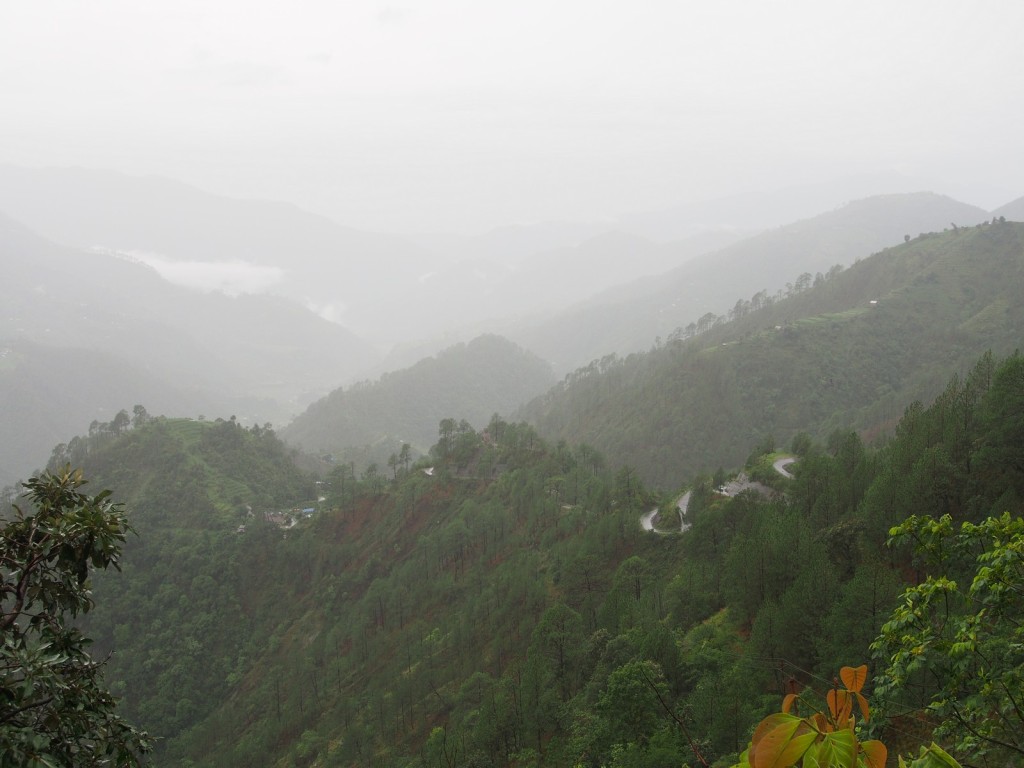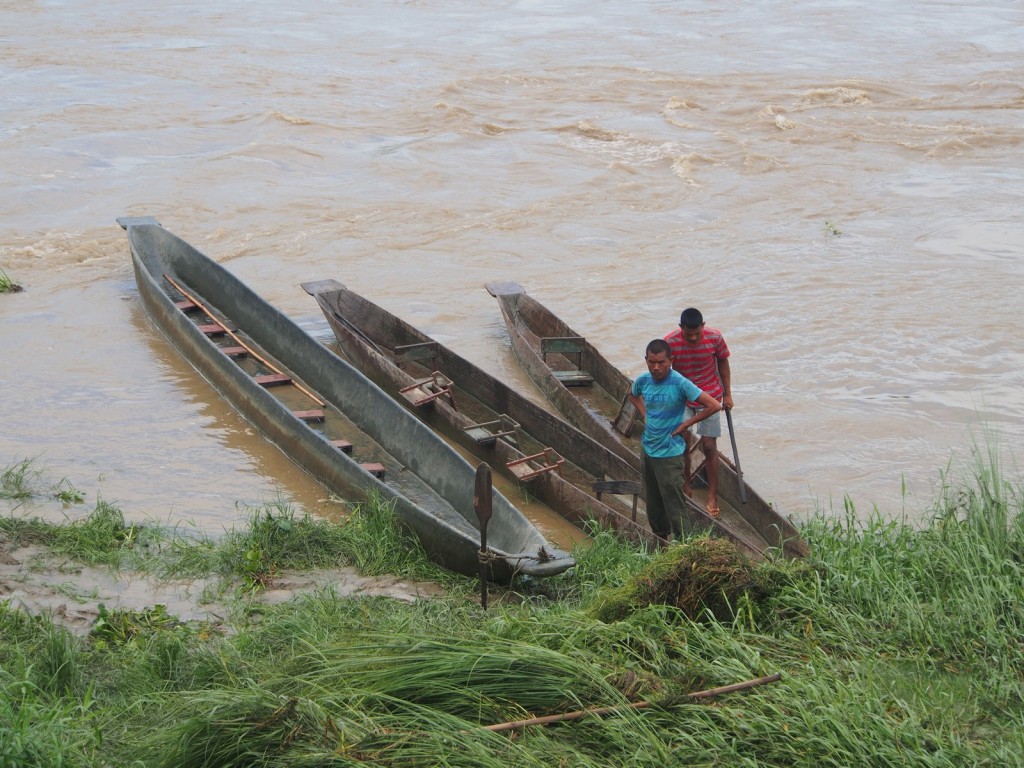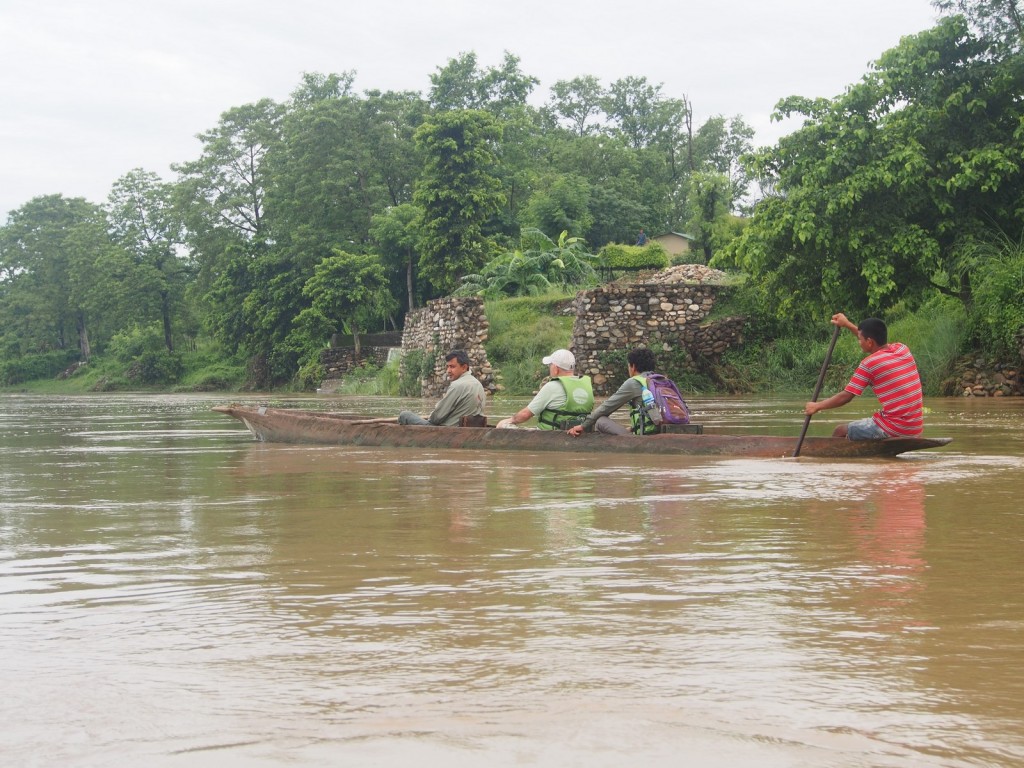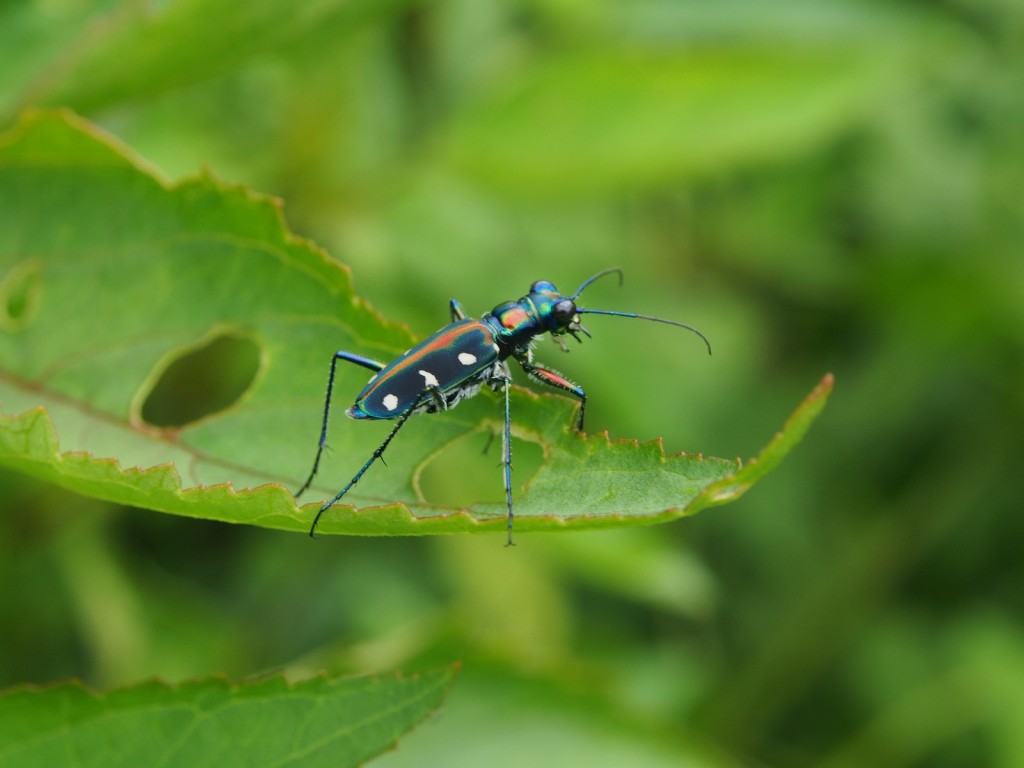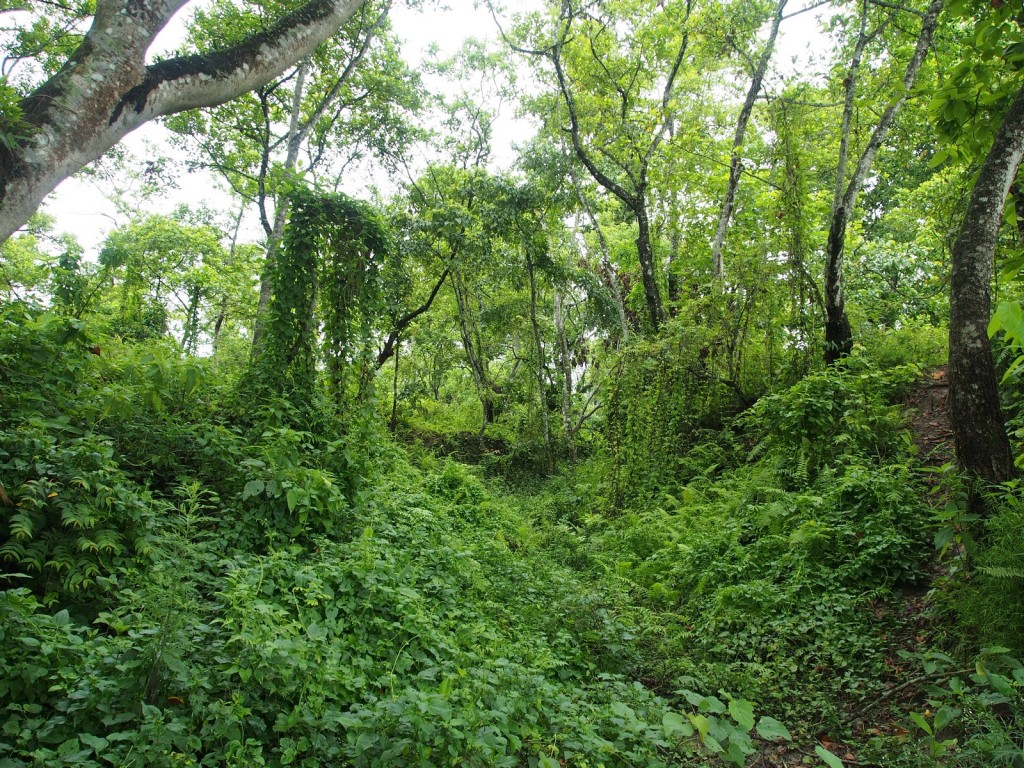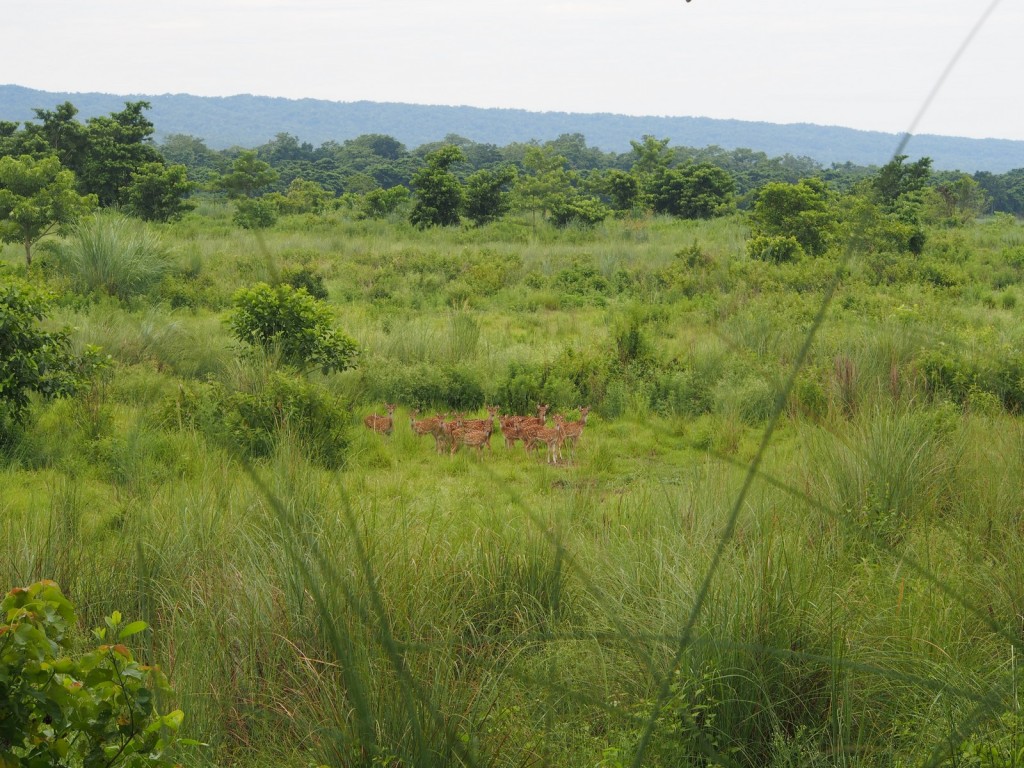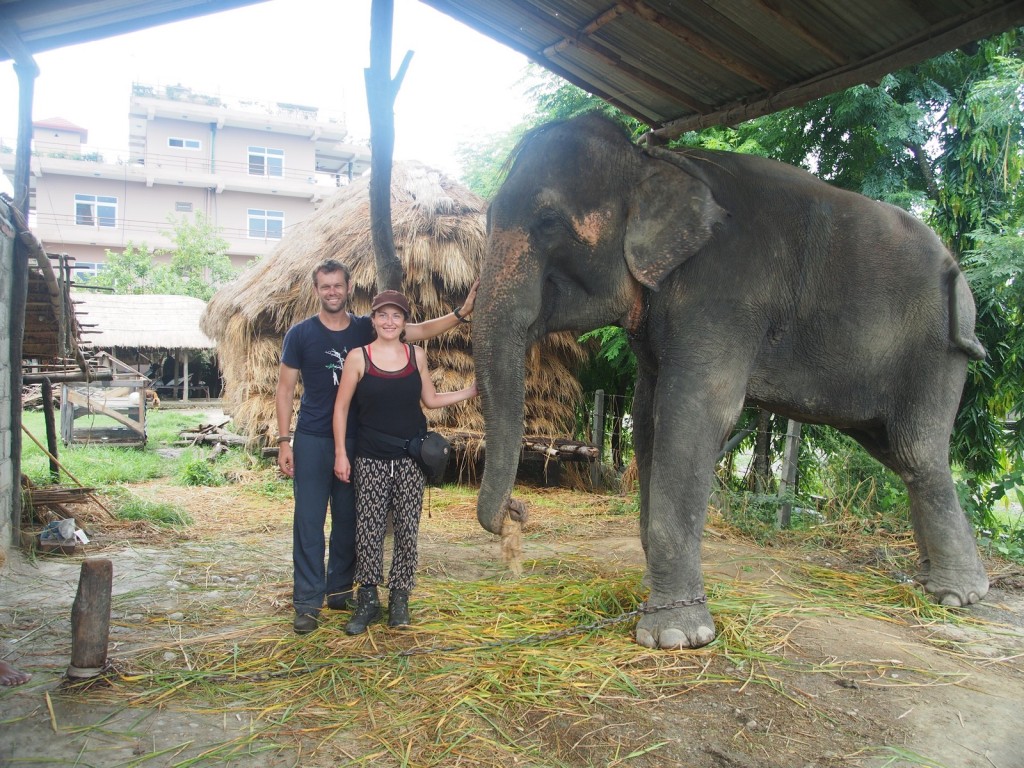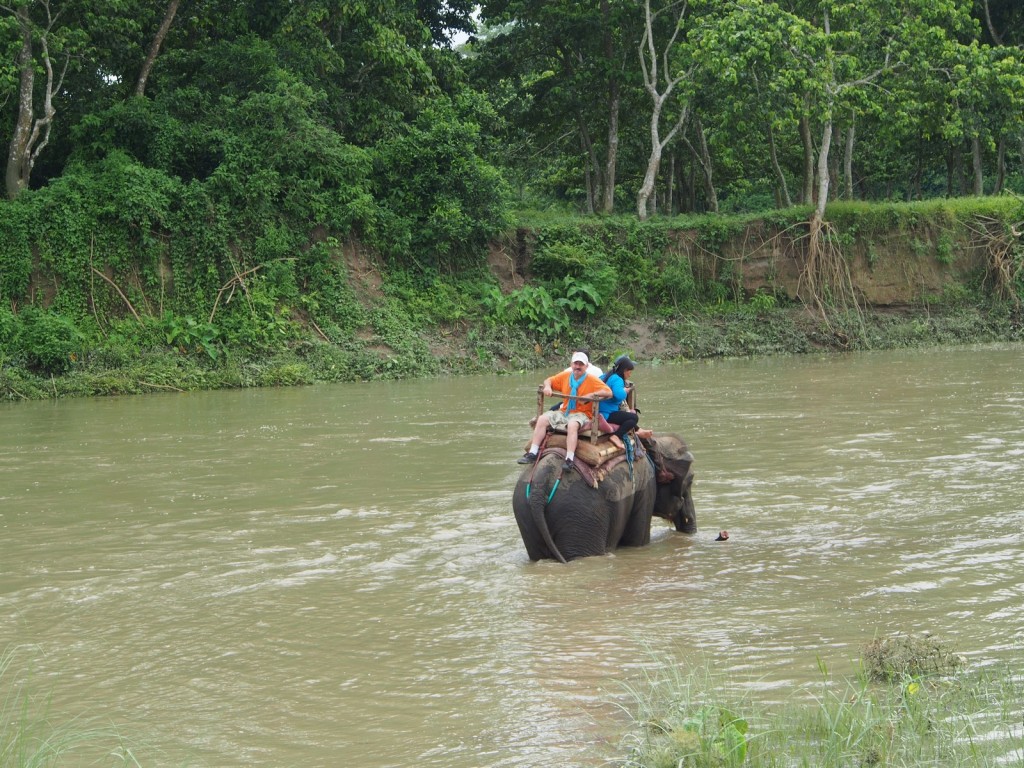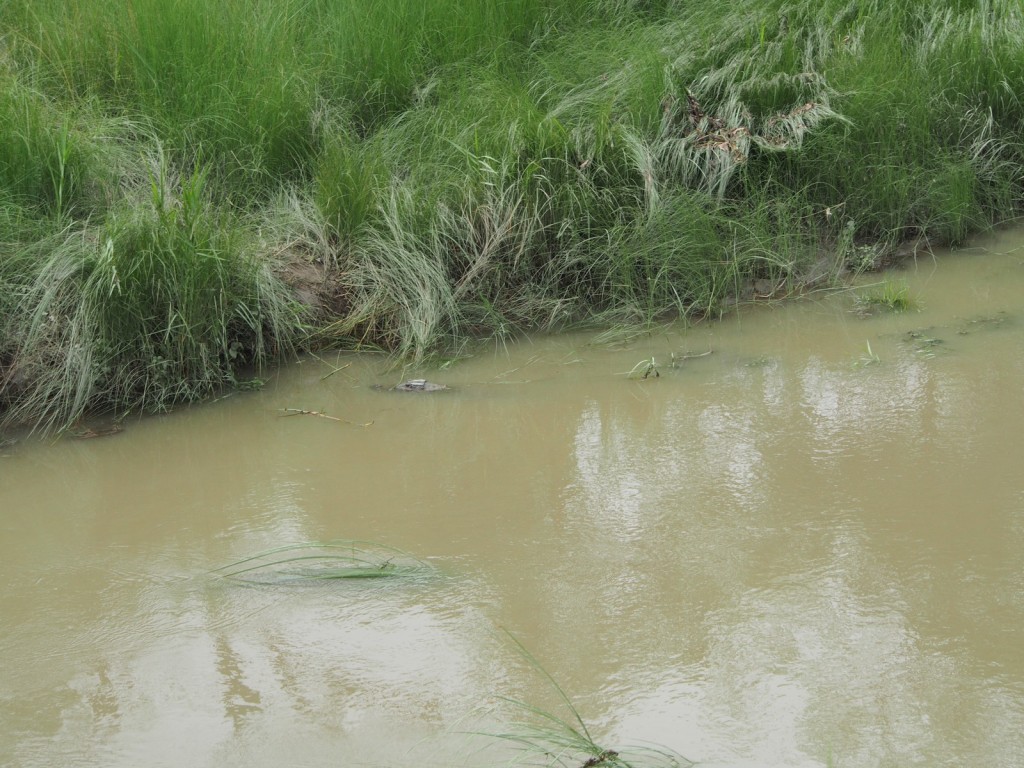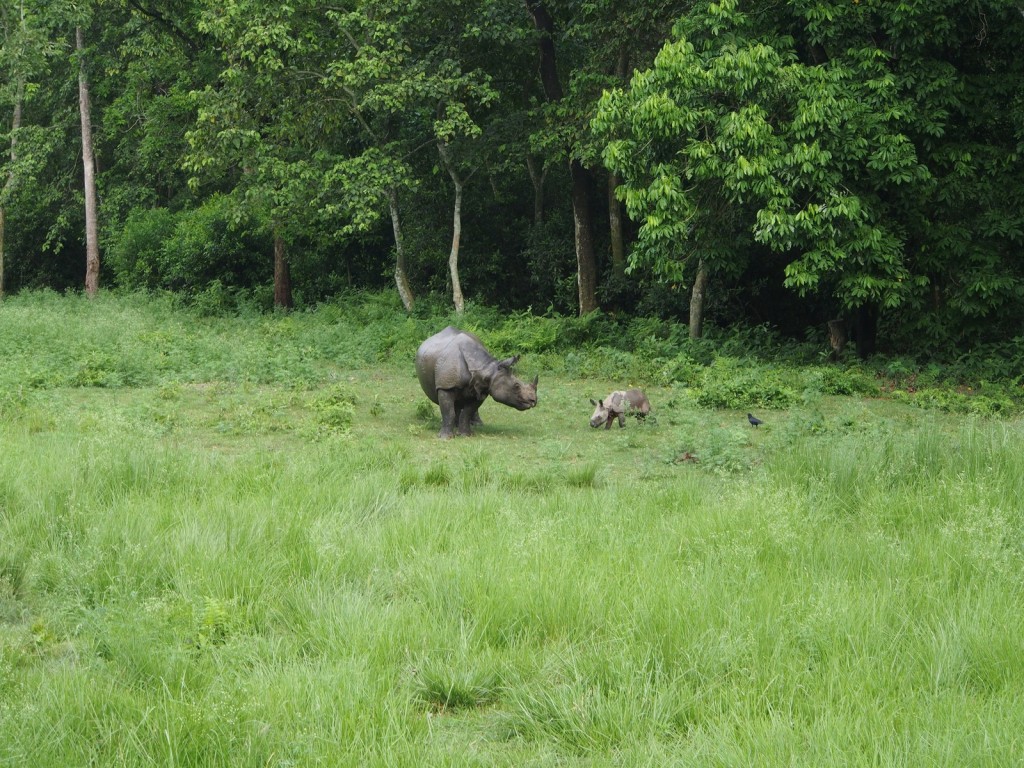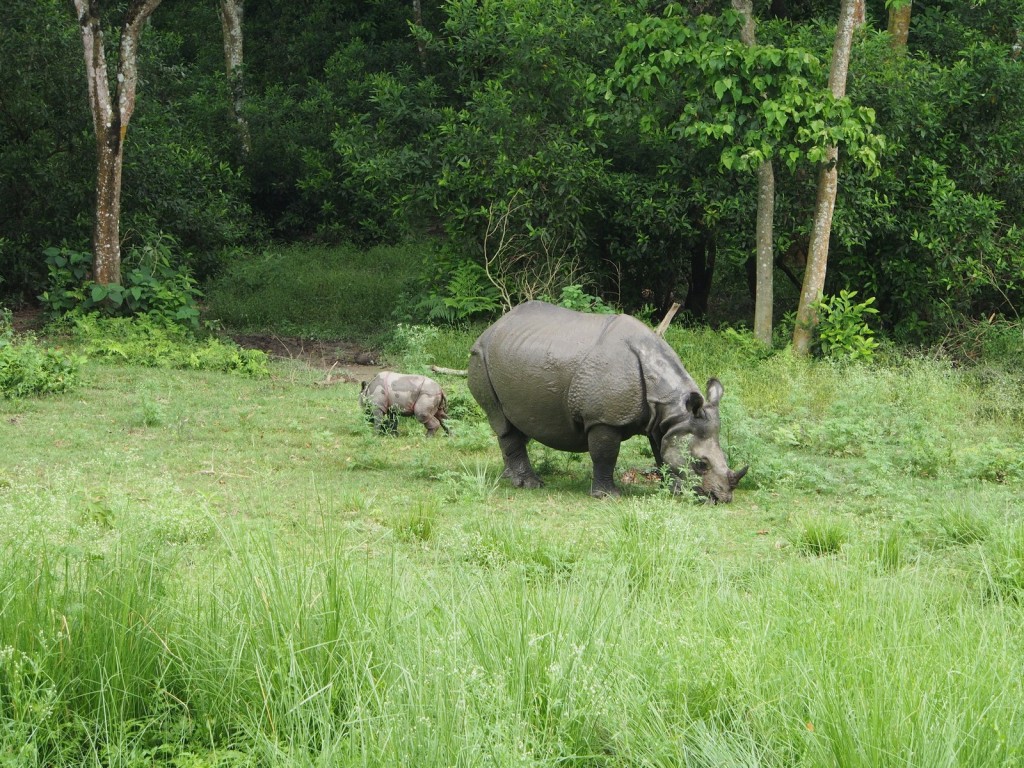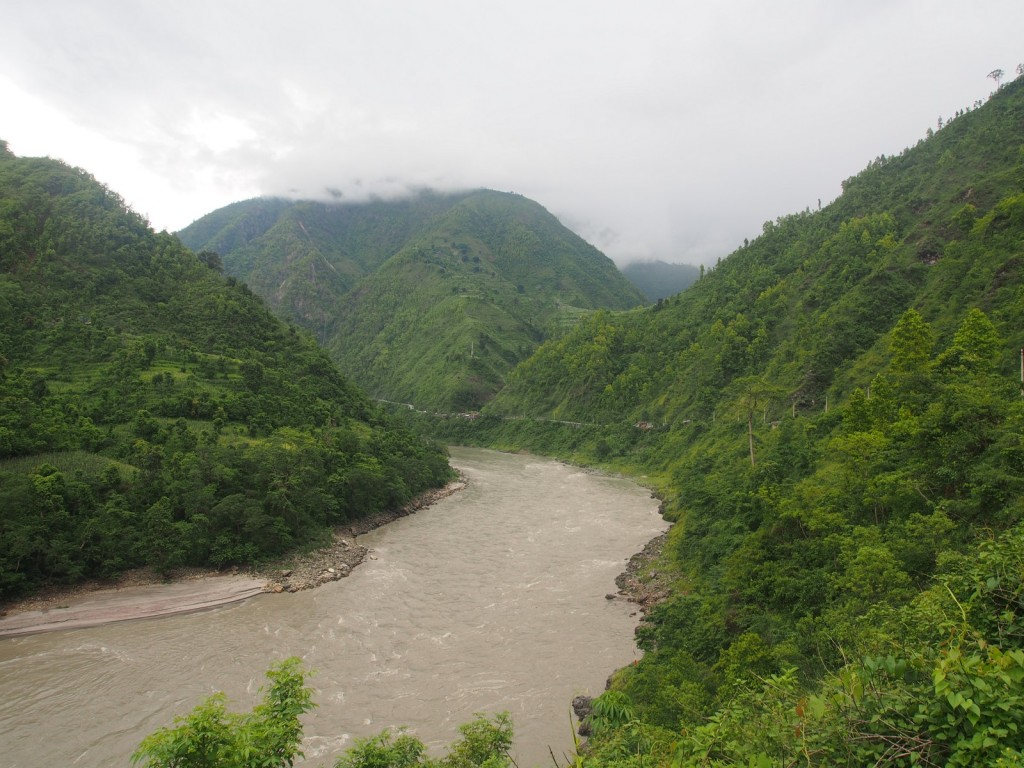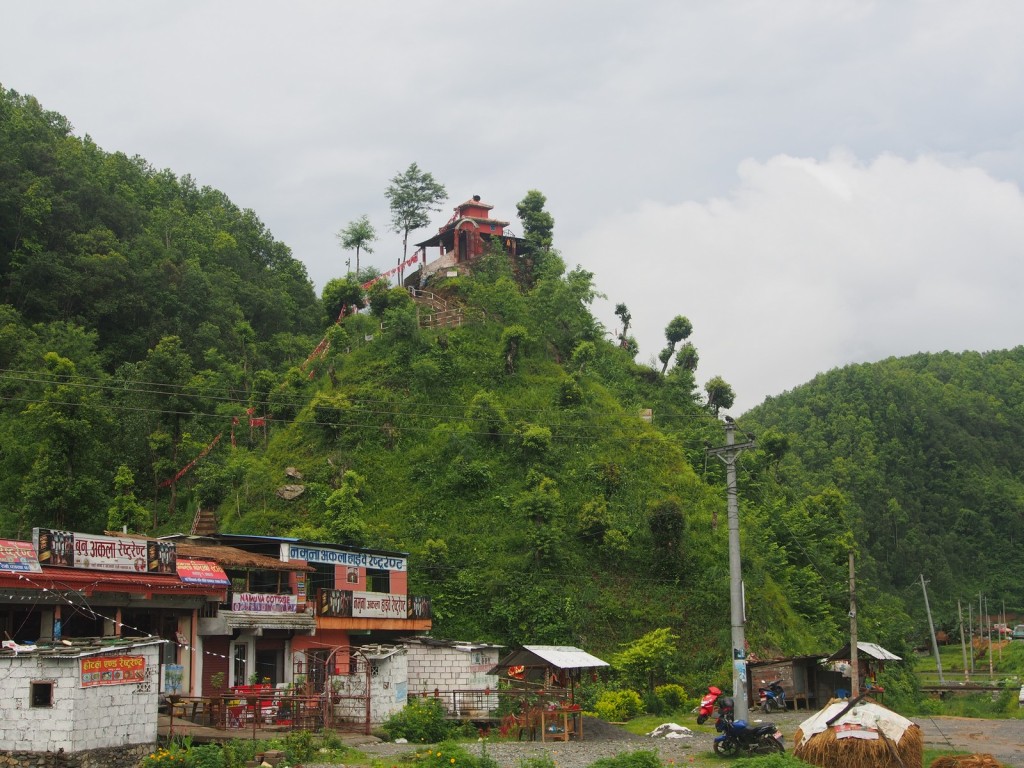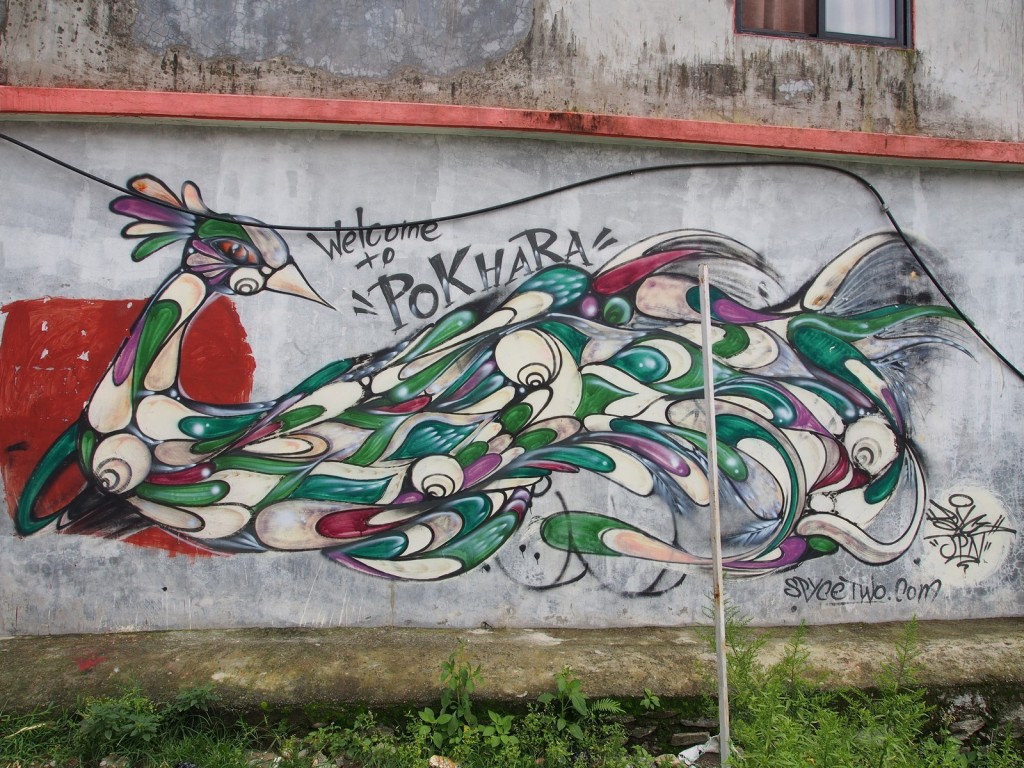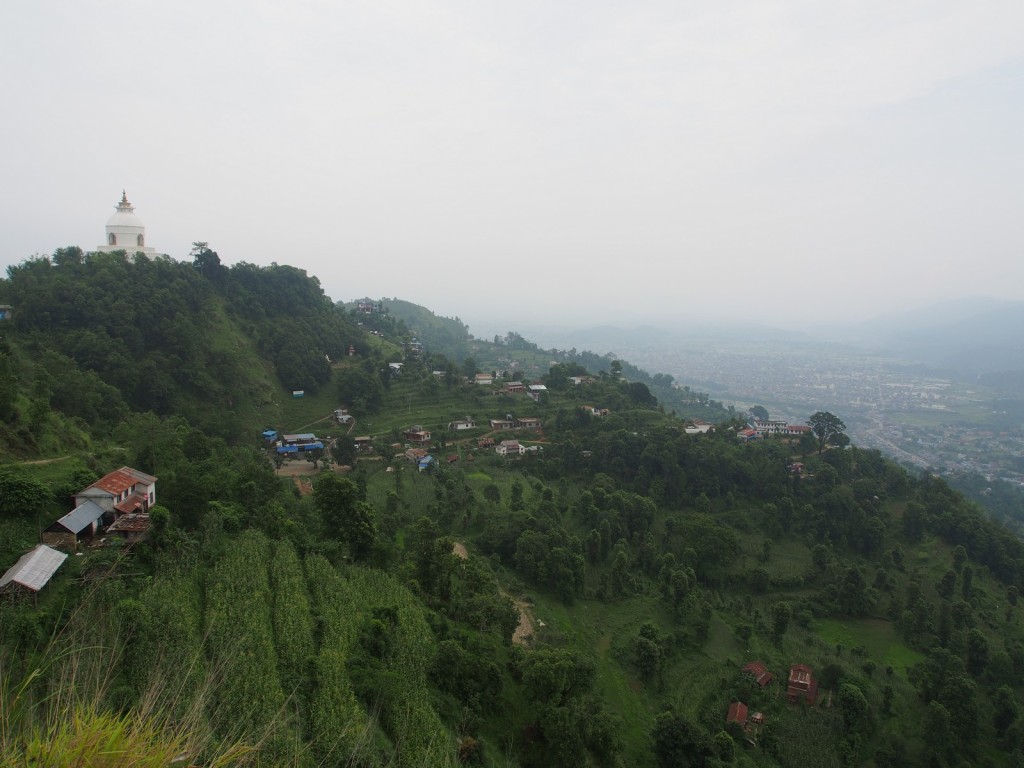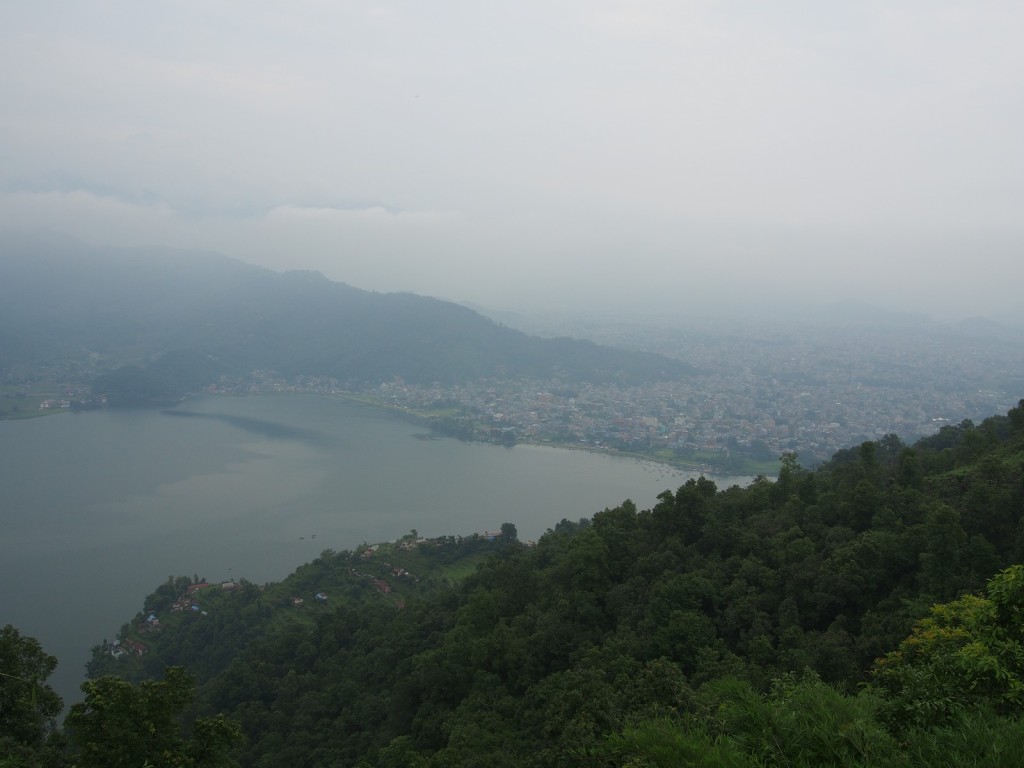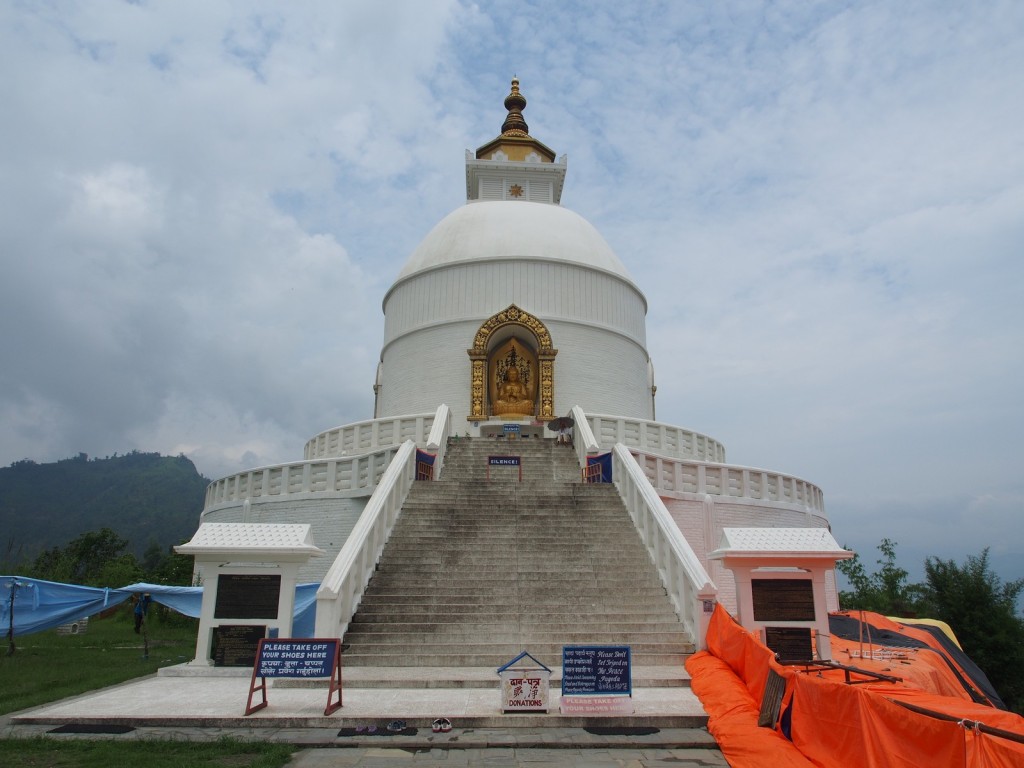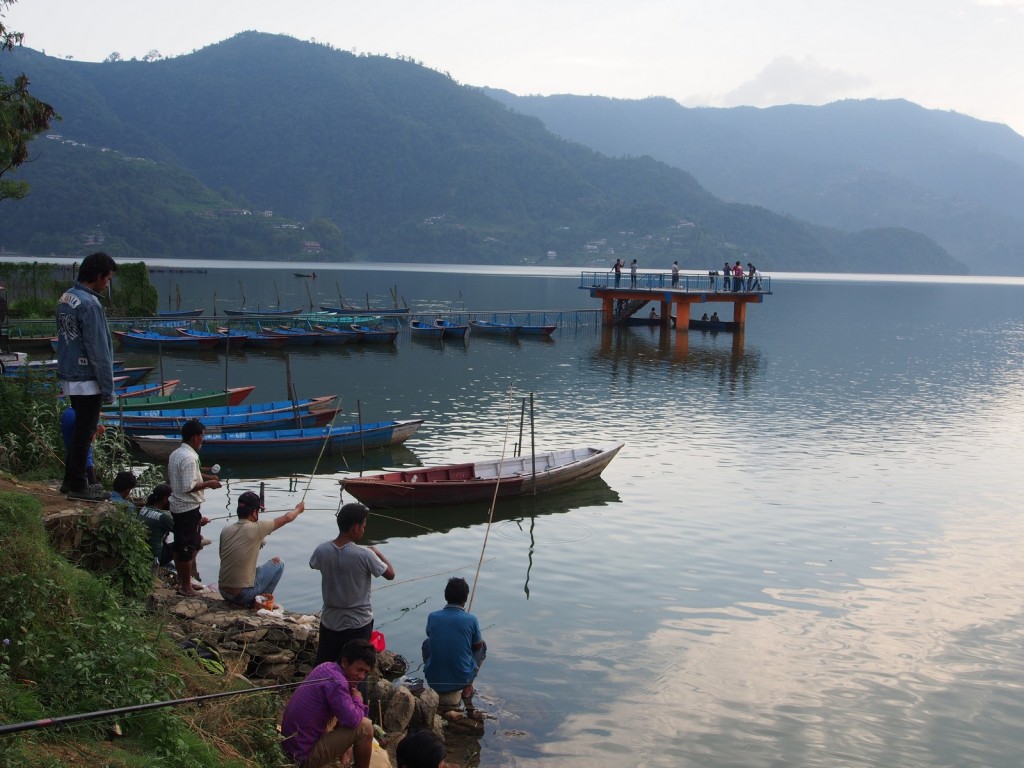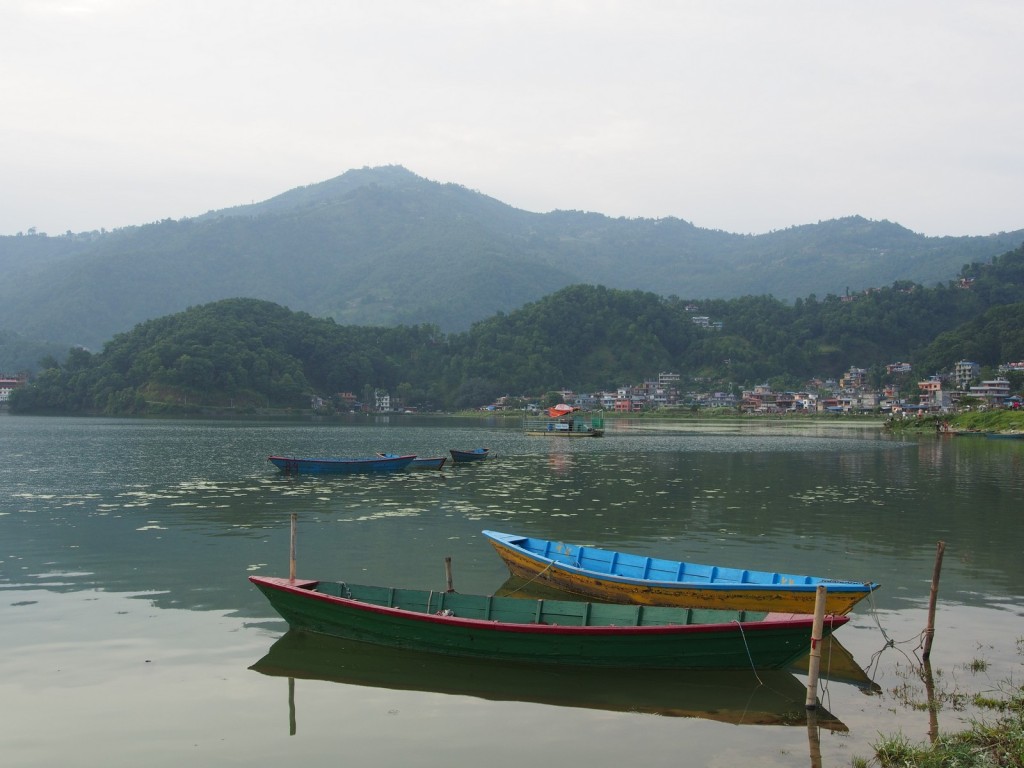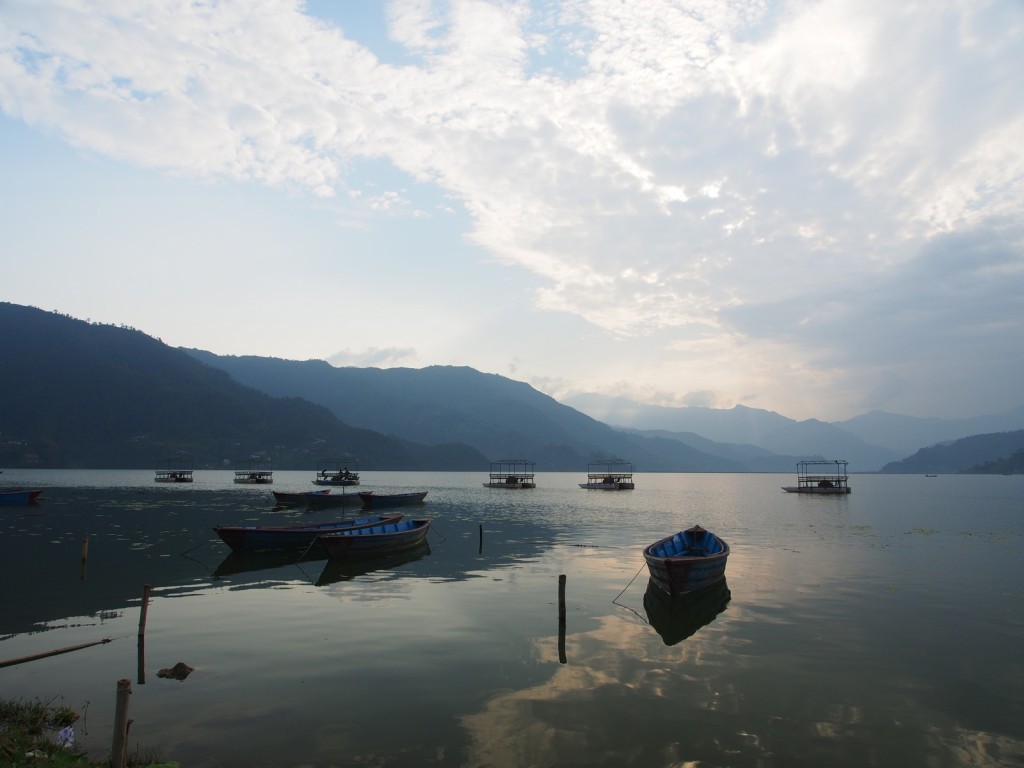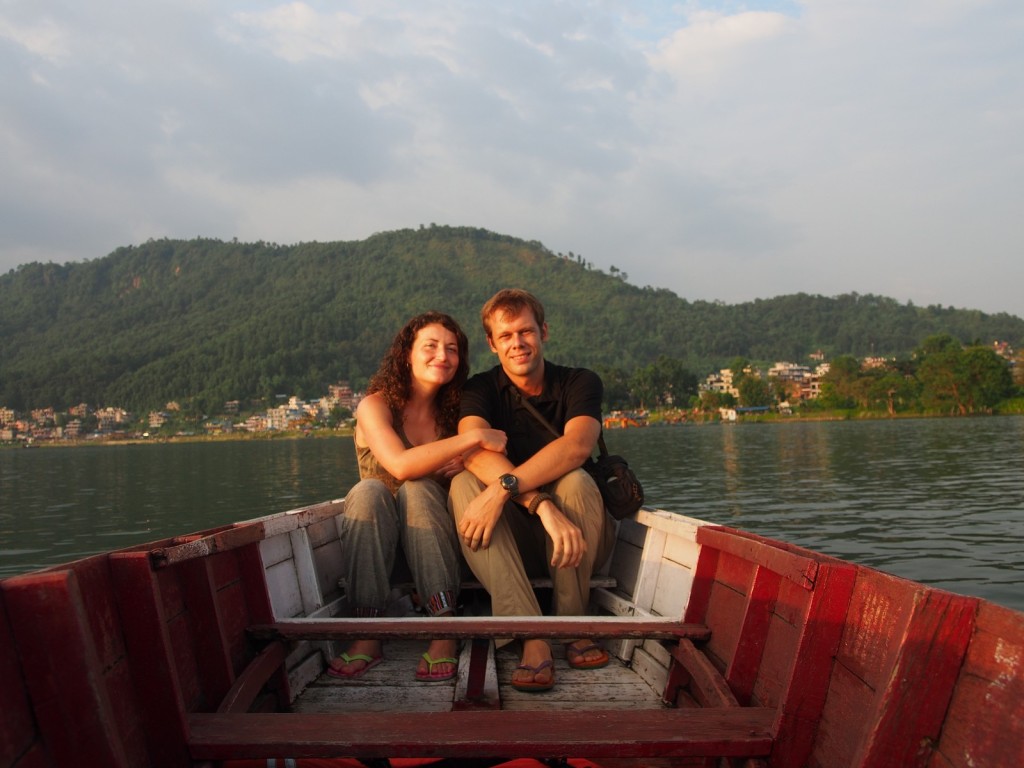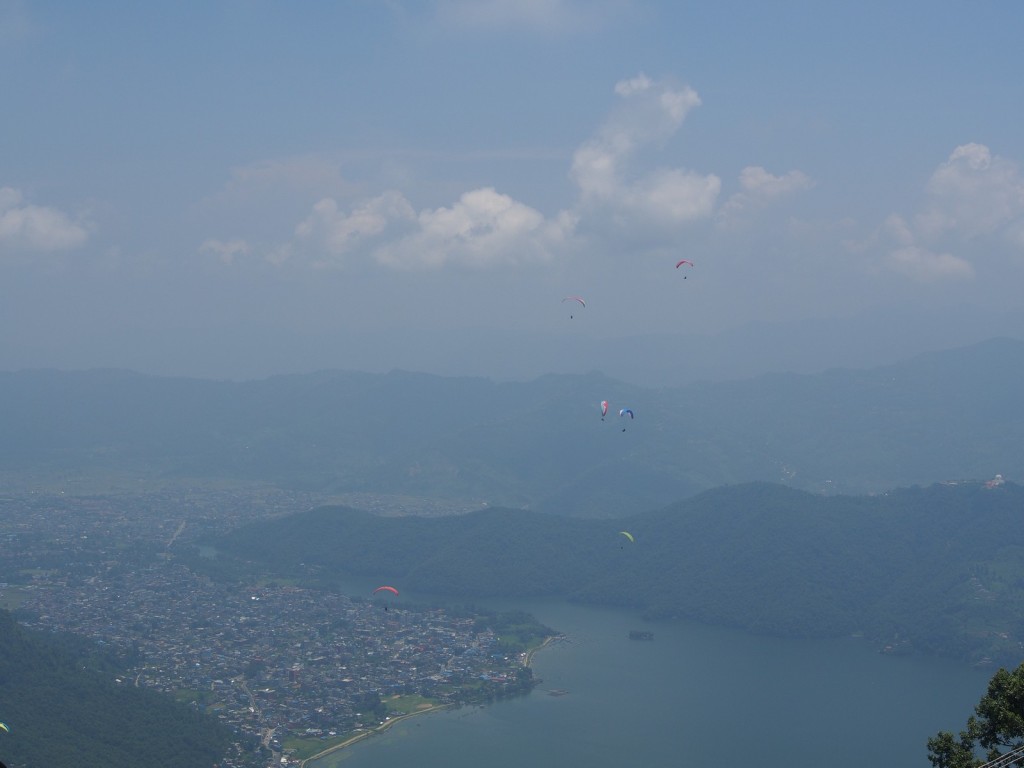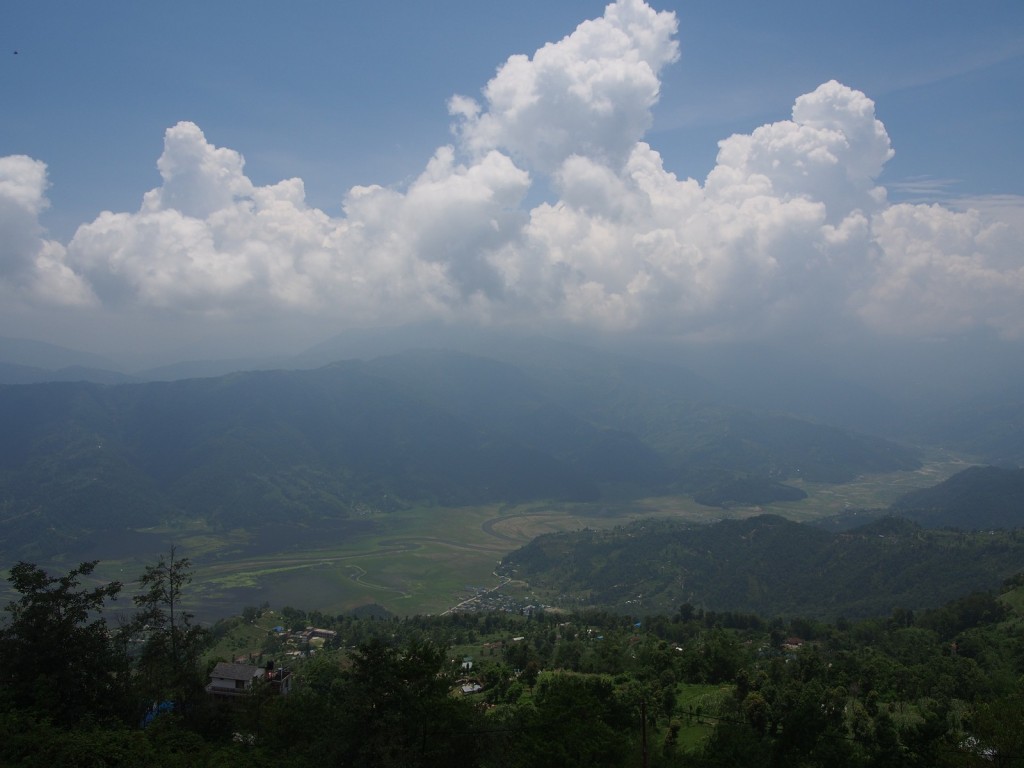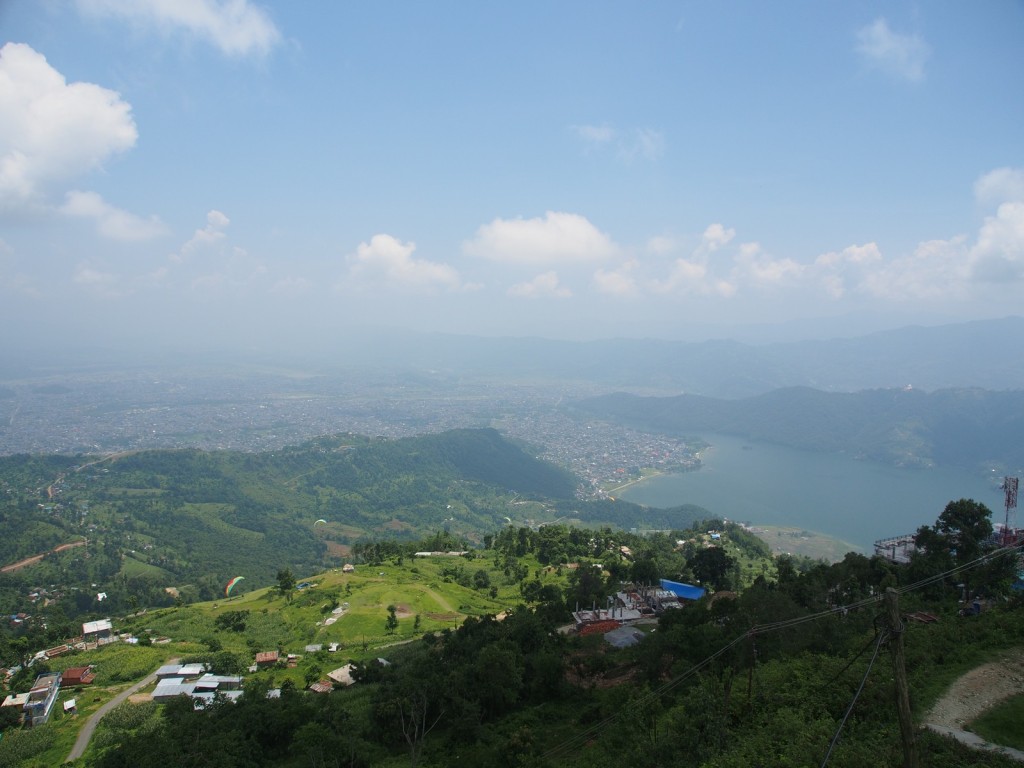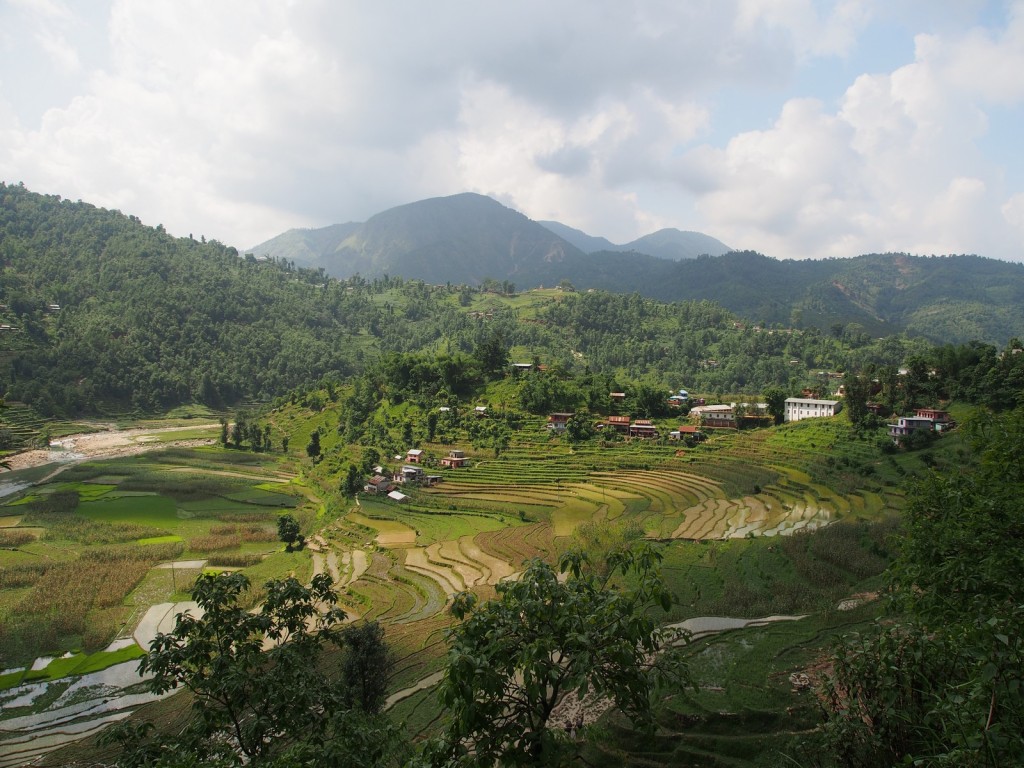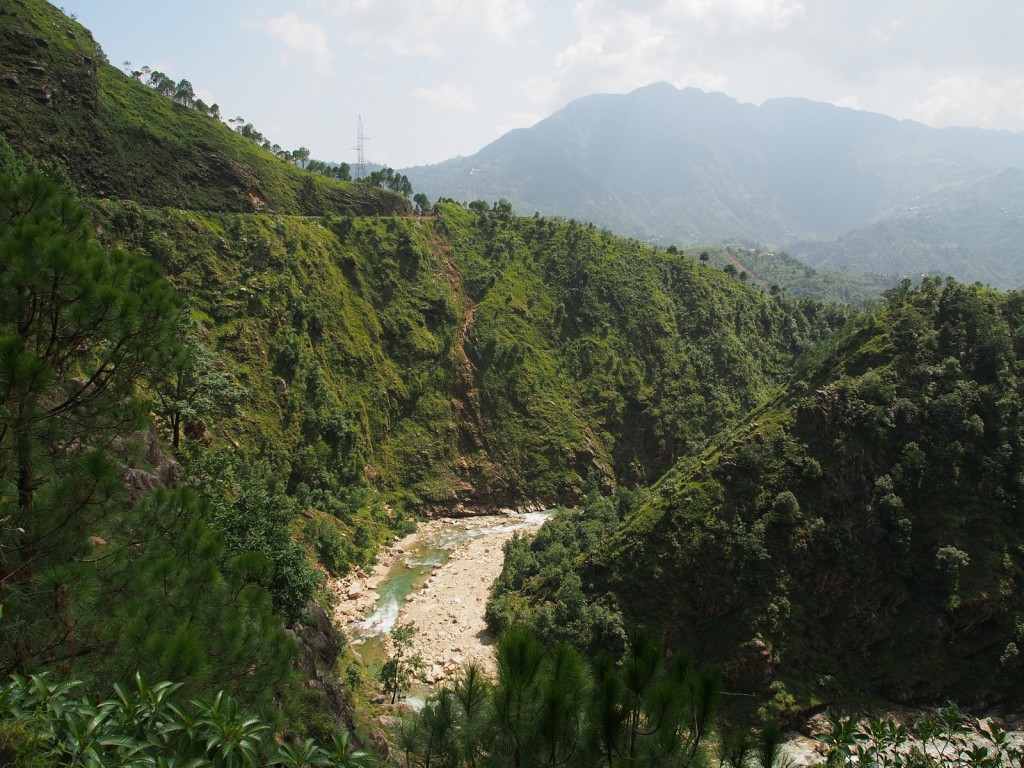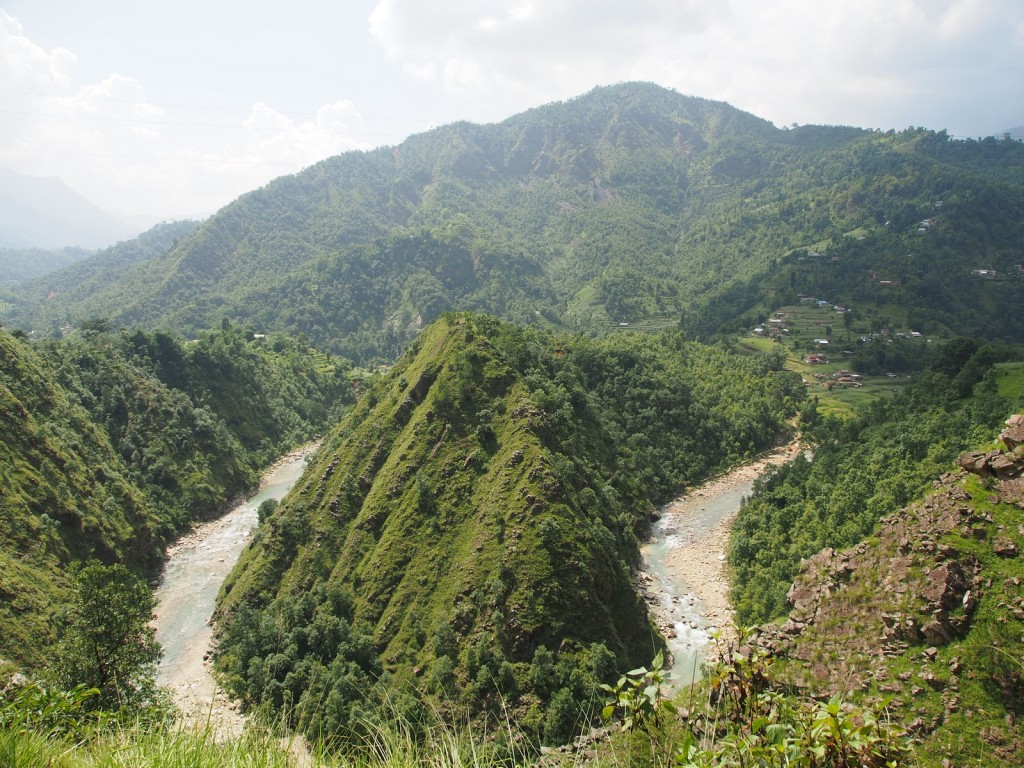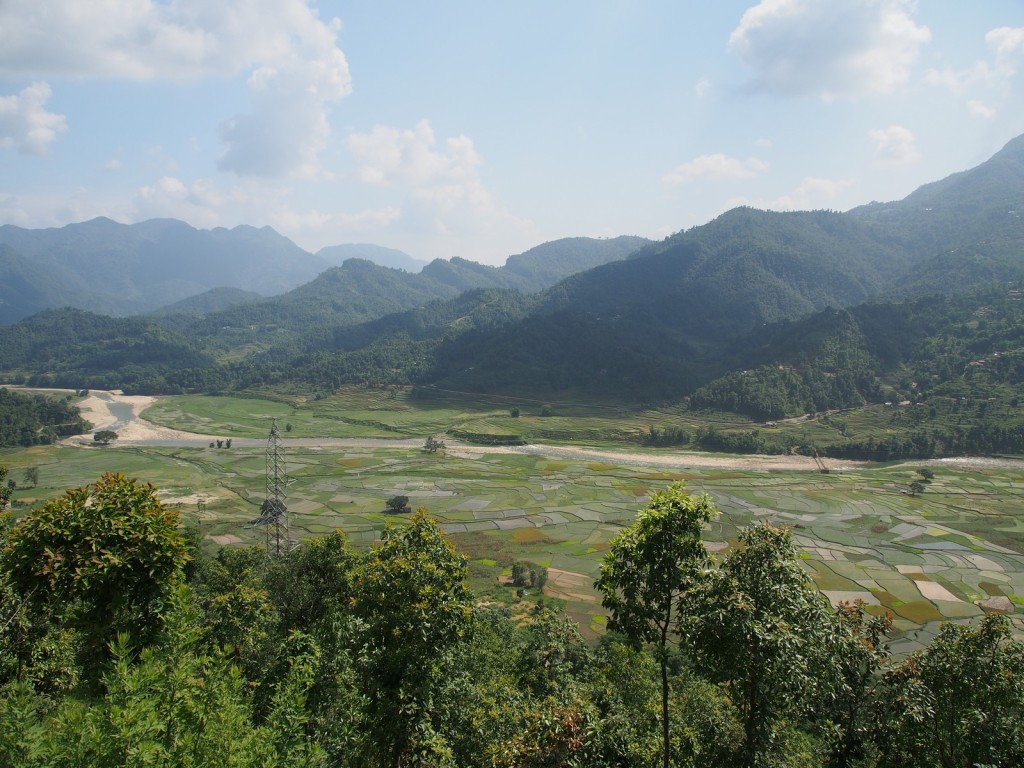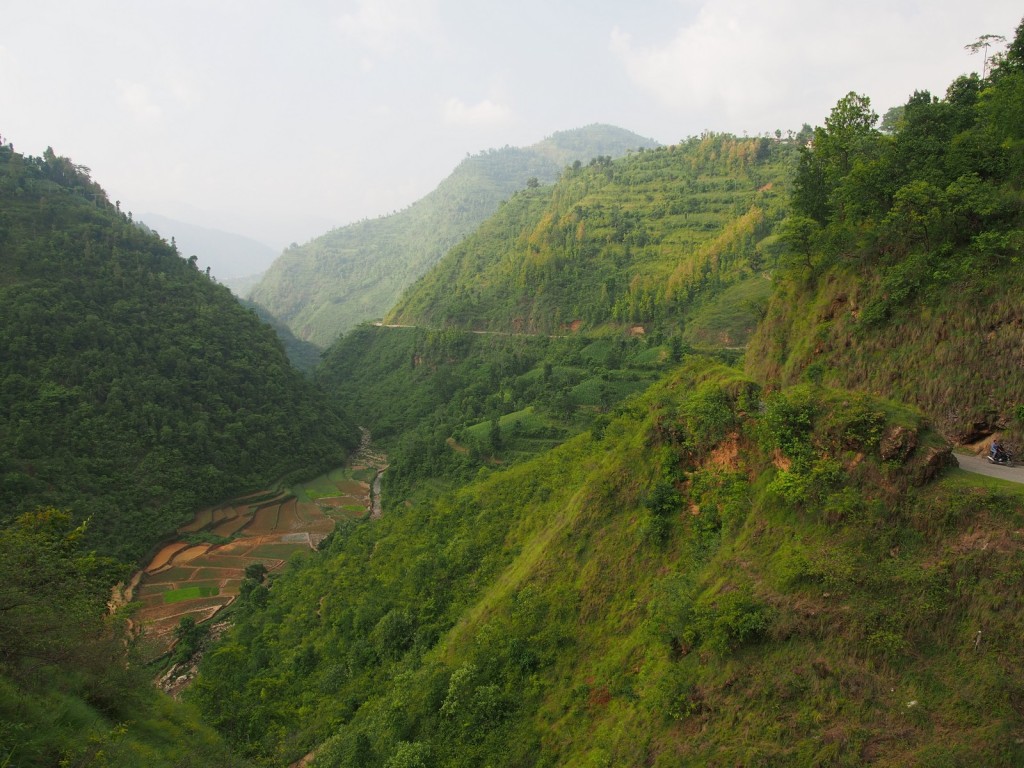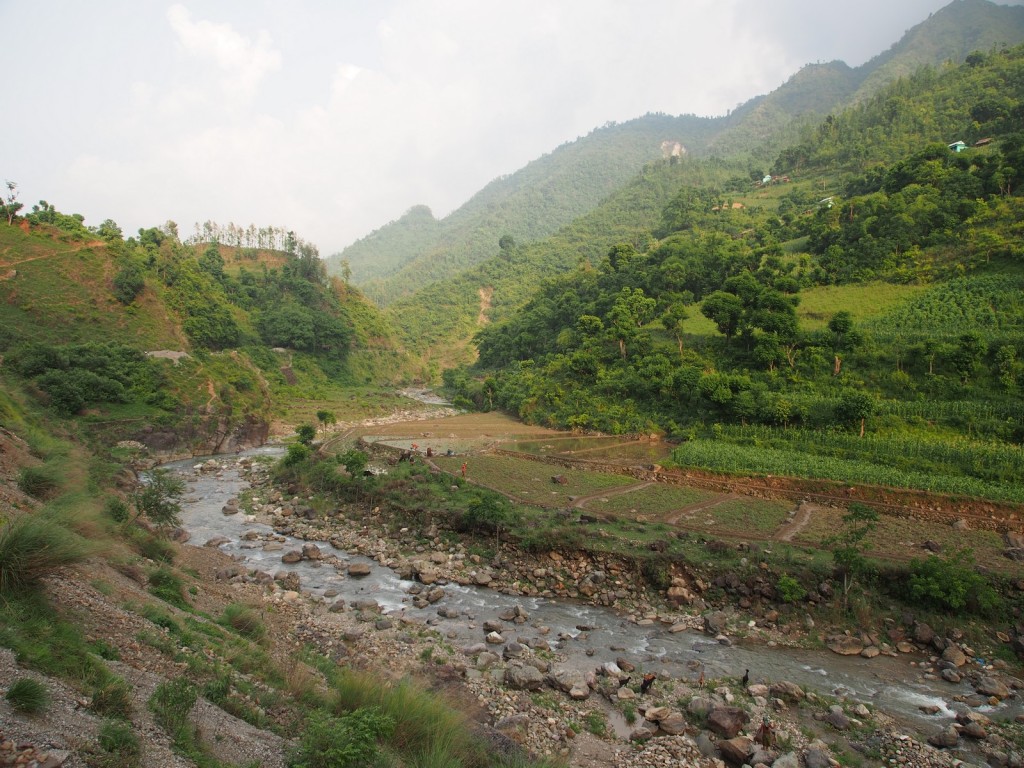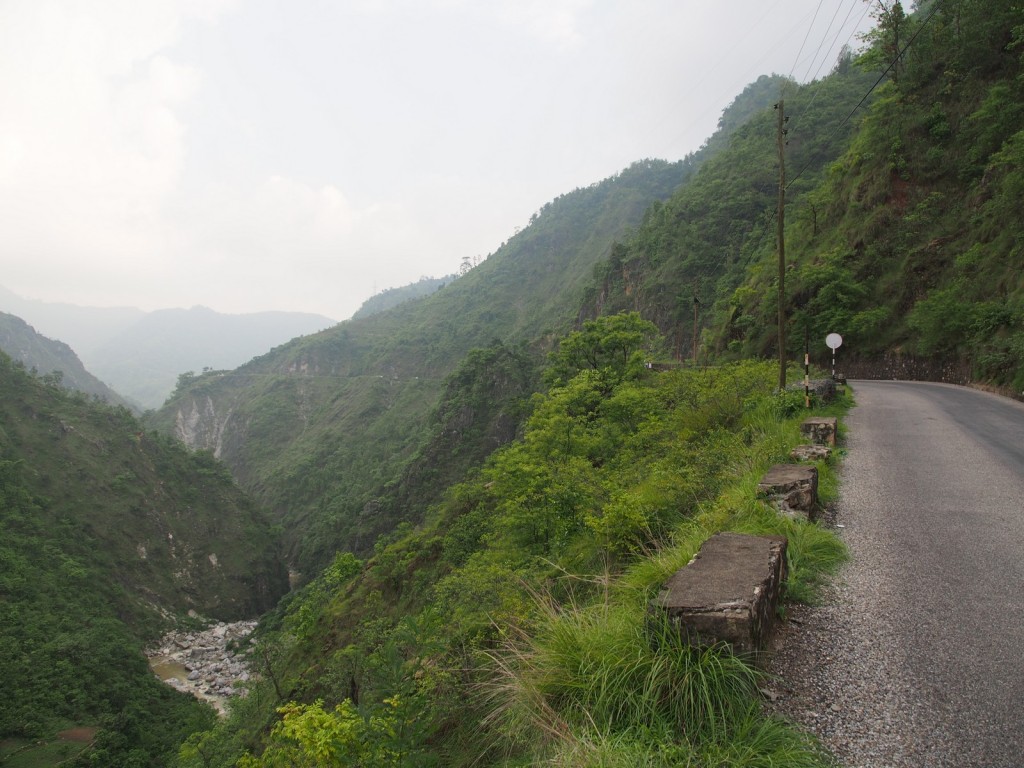Setting off from Kathmandu, we headed back south to the plains, along the same mountain road we came in – the only difference this time being that it was raining!
Our destination was the small village of Sauraha, on the edge of Chitwan National Park. It’s home to many of Asia’s most famous (and often endangered) large animals – elephants, rhinoceros, tigers, and leopards. We started the day with a canoe ride down the river, and a walk through the jungle.
One of the key attractions of Chitwan is the elephants – most of the larger hotels in town maintain one, which are used to do safaris through the jungle. We met the one at our hotel before taking a jungle trek on elephant back.
It wasn’t the most comfortable ride, but the elephant’s scent masked our own, so we were able to approach the animals much more closely than we would normally be able to.
Spot the crocodile.
The highlight was seeing a pair of rare Asian rhinos – a mother and calf.
Another rainy morning, another glorious mountain road, headed to the trekking hub of Pokhara. This time, the road followed river canyons, with the water below seething and roiling from the increased flow of the monsoon.
Pokhara is Nepal’s second largest city, and arguably a bigger tourist drawcard than Kathmandu. It is situated just on the edge of some of the Himalaya’s steepest slopes, with three 8000 metre peaks visible on a clear day. It’s the base for trekking in the Annapurna region, however as with Kathmandu, the earthquake and the start of the monsoon season meant that we had the town almost entirely to ourselves.
There are two vantage points near town that are supposed to offer panoramic views of the Himalayas. Despite a heavy haze (thanks, monsoon) we rode up steep and rocky tracks to the first, the World Peace Pagoda on the south side of the lake. No Himalayas, but good views over the surrounding areas, the town and the lake.
In the afternoon we wandered through town and along the lake front. It’s a beautiful, peaceful part of the world, with locals fishing and swimming, and tiny café/bars offering chai or beer, depending on your tastes.
Inspired, we hired one of the many boats and went for a paddle.
We were supposed to leave town early the next morning, however when we woke up to a bright sunny day we decided to have another go at seeing the Himalayas – this time from Sarangkot, the most famous viewpoint. Sadly, the mountains were still hidden behind their clouds, but again there were views over the surrounding areas to rival any lookout, even without the snow-capped background. It’s also a popular spot for paragliding.
Finally it was time for us to head south, back towards the border with India. Nepal had one final, gorgeous road for us, again winding along steep mountains, overlooking narrow river valleys and plains full of rice paddies.
We slept the night just short of the border, and prepared ourselves mentally for the challenges (traffic, bureaucracy, crowds) that India presents.

